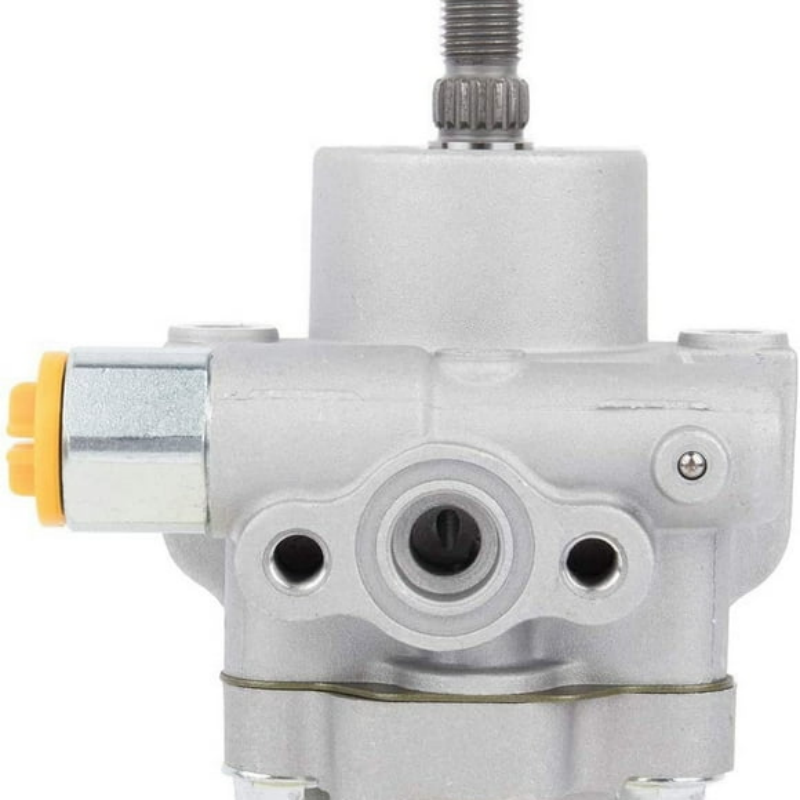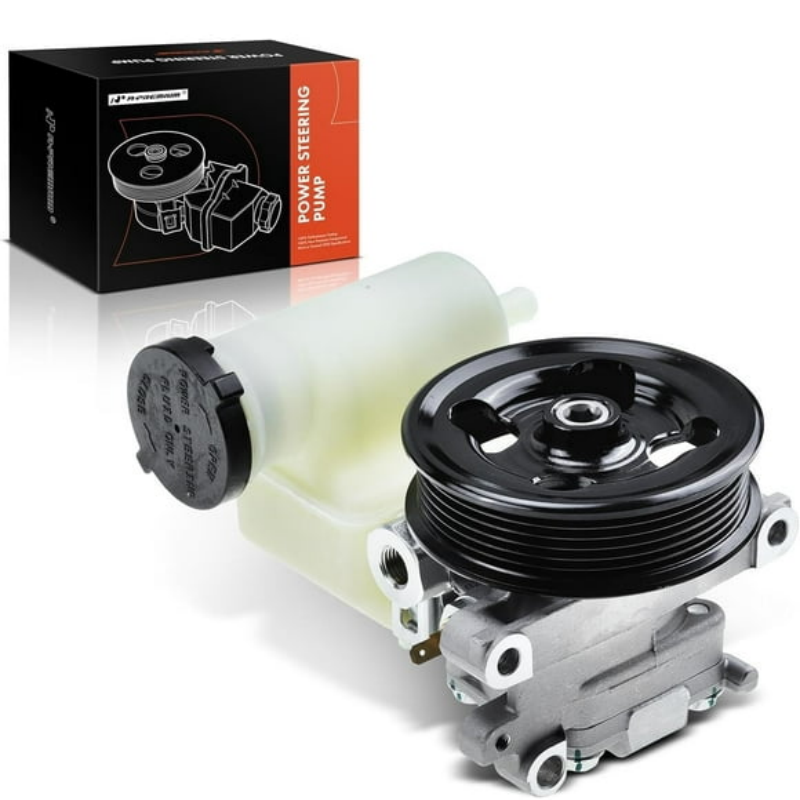How to Turn Off Smart Steering: A Complete Guide to Your Ride
In today’s automotive world, advanced technologies like steering offer enhanced driving experiences by providing greater control and stability. However, there are times when drivers prefer to take the reins themselves, leading to the need to turn off these automatic systems. Knowing how to turn off steering is essential for various reasons, whether you find it distracting, want to gain more tactile feedback, or simply prefer managing your vehicle’s steering dynamics manually.
Smart steering can improve safety features and assist with difficult driving conditions, but it may not be comfortable for everyone. Understanding the settings unique to your vehicle, alongside general steps to deactivate the smart steering function, equips you with the knowledge to adjust your driving experience as necessary. This comprehensive guide aims to explore everything related to steering systems—how they work, when to disable them, and detailed instructions on how to turn off steering. By the end of this article, you will have a firm grasp on confidently controlling your vehicle’s steering settings.
Understanding Smart Steering Systems
Before figuring out how to turn off smart steering, it’s essential to understand what the system entails. Smart steering, also known as Electronic Power Steering (EPS) or Active Steering, is an advanced technology designed to enhance vehicle handling and control. Here’s what to know about its features:
What is Smart Steering?
Smart steering systems utilize electric motors to assist in steering, providing varying levels of assistance based on driving conditions. This means that the steering may feel lighter when maneuvering at low speeds, such as during parking, and firmer at higher speeds for stability.
Key Features of Smart Steering
- Adjustable Steering Feel: Many smart steering systems allow drivers to adjust the level of steering assistance. This means that you can choose how responsive or precise you want the steering feel to be.
- Enhanced Maneuverability: In conjunction with advanced algorithms, smart steering can enhance the rate of response, assisting drivers in navigating tricky driving conditions, such as during tight turns.
- Integration with Safety Systems: Smart steering systems can work with other active safety features, such as lane-keeping assist and adaptive cruise control, promoting greater safety on the road.
Potential Benefits
- Improved Comfort: Easier steering at parking speeds can minimize driver fatigue and enhance the overall driving experience.
- Safe Handling: By providing appropriate steering feedback, smart steering promotes safer handling during adverse conditions.
- Customization Options: The ability to personalize steering feel appeals to drivers looking for a touch of individuality and comfort in their driving experience.
Understanding how smart steering works may inform your decision on when and why to deactivate it.
Reasons You Might Want to Turn Off Smart Steering
While smart steering offers several benefits, there are various reasons drivers may prefer to deactivate it temporarily or entirely:
1. Discomfort in Steering Feel
Some drivers may find the steering too light or overly sensitive, making it hard to gauge the vehicle’s exact position on the road. Turning off steering can lead to a more familiar and traditional steering feel.
2. Prefer Manual Control
In certain driving scenarios, such as off-roading or navigating narrow paths, some drivers may prefer more traditional steering without assistance to maintain a tactile connection with the road surface.
3. Troubleshooting Issues
Occasionally, electronic systems can malfunction. If the steering experiences any inconsistencies, turning it off may be necessary until the issues are resolved.
4. Personalization
Car enthusiasts often enjoy customizing their cars’ characteristics. By disabling steering, you can personalize your vehicle’s handling to suit your preferences.
5. Performance Driving
In performance driving situations, having manual control over steering can improve responsiveness and driver engagement, allowing for a more thrilling experience.
By understanding these reasons, you can make an informed decision on how to handle your steering system.
How to Turn Off Smart Steering
Now that you recognize the importance of smart steering and the situations in which you might want to turn it off, let’s explore how to do so. Below are common methods to deactivate steering, though exact steps may vary depending on your vehicle make and model:
1. Using the Vehicle’s Infotainment System
Most modern vehicles equip drivers with an infotainment system that can control various vehicle settings, including steering options. Here are the general steps you may follow:
- Start Your Vehicle: Turn on the ignition but ensure the engine is not running yet, as some settings are available only when the vehicle is on.
- Access Settings: Find the settings menu on your infotainment system. This is typically represented by a gear icon or labeled similarly.
- Navigate to Steering Settings: Look for an option related to steering or driving dynamics. You may find it under categories like “Vehicle Settings,” “Driving Modes,” or “Driver Assist Settings.”
- Deactivate Smart Steering: Within this menu, you should find an option to turn off or adjust steering assist. Follow the prompts to save the settings.
2. Using Physical Controls
If your vehicle is equipped with physical switches or buttons specifically for steering assistance, you can deactivate steering by using these controls:
- Locate the Button: Some vehicles feature a dedicated button on the steering wheel or dashboard labeled “Steering Assist” or similar terminology.
- Press the Button: Simply press the button to deactivate the assistance feature. You may see a light indicating that the function is off.
3. Referencing the Owner’s Manual
The most reliable source for specific instructions on deactivating steering for your vehicle is your owner’s manual. Here’s how to use it effectively:
- Locate Your Manual: If your manual is in digital form, access it via your vehicle manufacturer’s website or mobile app.
- Search for Steering Options: Use the index or a keyword search feature to find references to steering or drive assist settings.
- Follow Provided Instructions: Follow the instructions to turn off smart steering as outlined.
4. Consult Your Manufacturer’s Support
If you’re unable to find how to deactivate smart steering, you can also contact your vehicle manufacturer’s customer service or visit a local dealership for assistance. They can provide specific steps tailored to your vehicle.
By using any of these methods, you can efficiently turn off smart steering and have a more personalized driving experience.
Troubleshooting Smart Steering Issues
If you experience problems with your smart steering system, identifying the issue can allow you to make informed decisions. Below are common issues and potential troubleshooting steps:
1. Warning Lights
If your dashboard shows a warning light related to your steering or stability control, it may indicate a malfunction in the smart steering system.
- Check Owner’s Manual: Refer to the manual for the specific meaning of the warning light.
- Scan for Codes: If comfortable, you may use an OBD-II scanner to scan for error codes that provide further insight into the issue.
2. Unresponsive Steering
If the smart steering system becomes unresponsive or acts inconsistently:
- Restart Your Vehicle: A simple restart can sometimes reset systems and restore functionality.
- Check Fuses: Inspect any fuses related to electronic steering systems. A blown fuse may affect the operation.
3. Poor Performance
If your smart steering is performing poorly (too responsive or not responsive enough), consider:
- Adjusting Settings: Return to the infotainment system and check if the settings were inadvertently changed.
- Seek Professional Help: If the issue persists, professional diagnostic services may be necessary.
Staying informed about common issues ensures you maintain optimal steering performance.
Enhancing Your Driving Experience
Understanding how to turn off smart steering gives you control over your driving experience. Implementing knowledge of smart steering and adapting to your preferences can enhance the way you interact with your vehicle.
Here are strategies to maximize enjoyment on the road:
1. Find Your Comfort Level
Everyone has a unique driving style. Personalize settings for your comfort and performance preferences. Experiment with different steering feel settings until you find what works best for you.
2. Stay Informed
Stay updated on any potential recalls or updates related to your vehicle’s smart steering system. Regularly check with your manufacturer for any service bulletins.
3. Regular Vehicle Maintenance
Ensure that your vehicle is maintained regularly. Consistent service can preemptively address any potential issues with the smart steering system.
4. Practice Patience
Transitioning between smart steering and manual controls can feel different at first. Take the time to adjust and practice driving with your chosen settings to gain confidence.
5. Seek Community Support
Join driving forums or community groups that discuss smart steering systems. You can share experiences and tips with fellow vehicle enthusiasts.
By enhancing your driving experience through these strategies, you’ll maintain control over your vehicle while enjoying the ride.
Conclusion
As we’ve explored in detail, understanding how to turn off steering gives you essential control over your driving experience. Whether it’s to adapt to your personal comfort level or troubleshoot issues, knowing the steps and methods involved is vital.
Additionally, recognizing the importance of steering systems, coupled with their historical context and features, allows you to appreciate the technology integrated into modern vehicles. By following the guidelines on turning off steering and maintaining your vehicle, you can ensure a rewarding and safe driving experience.
Investing time in understanding your vehicle not only enhances functionality but also informs you about best practices for care and adjustments. Stay confident in your ability to manage features like steering, and enjoy the journey ahead!
